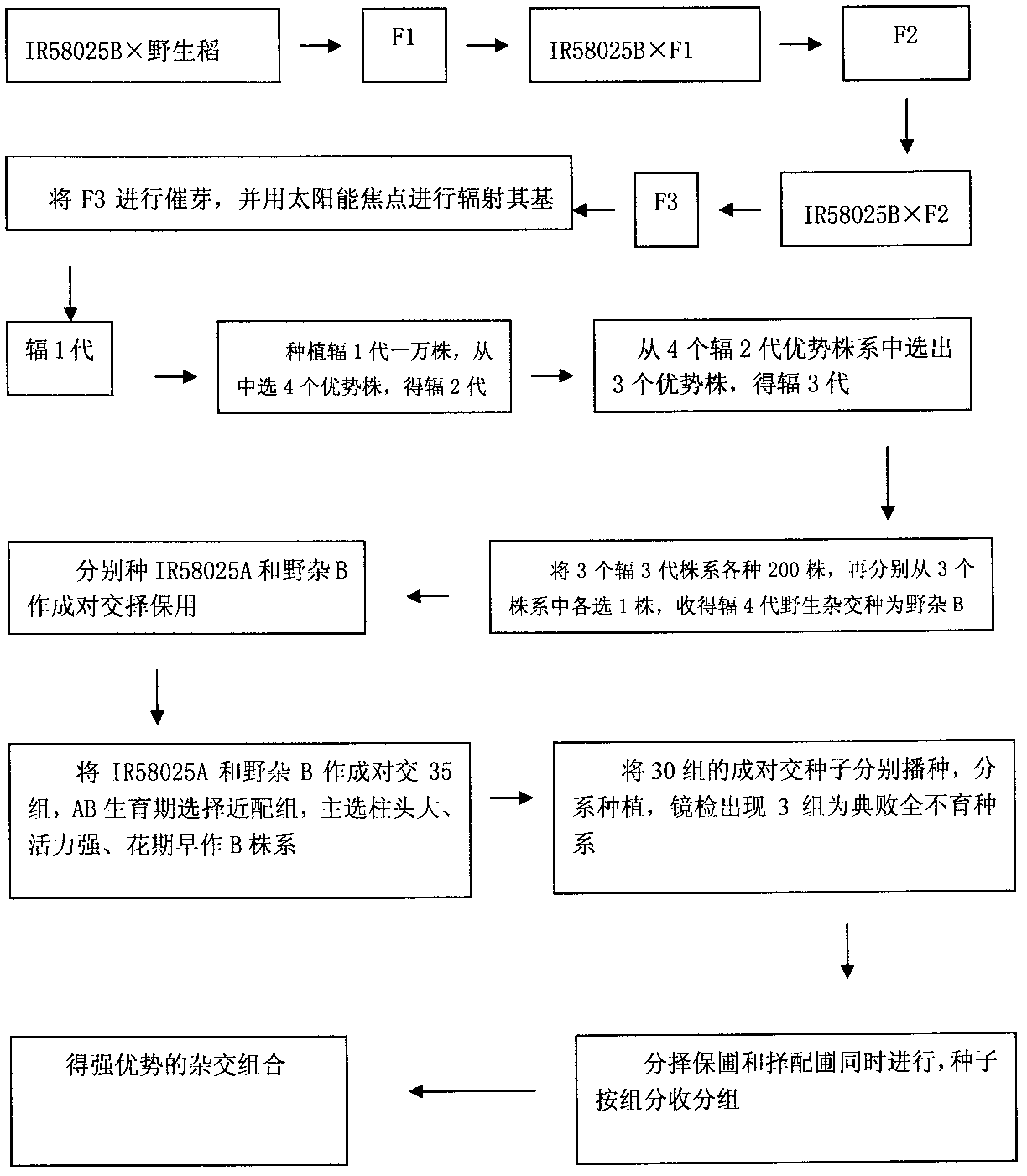Method for cultivating fine breed of hybrid rice by utilizing wild rice
A technology for hybrid rice and wild rice is applied in the field of cultivating improved hybrid rice varieties by using wild rice, which can solve the problems of poor stability of dominant plants, affecting the yield and quality of rice, and long process cycle, and achieves improved fruiting, large variation, and measures unique effect
- Summary
- Abstract
- Description
- Claims
- Application Information
AI Technical Summary
Problems solved by technology
Method used
Image
Examples
specific Embodiment approach
[0034] Utilize wild rice to cultivate hybrid rice improved varieties, the specific implementation method is as follows:
[0035] 1. Using IR58025B emasculation as the female parent to cross with wild rice to obtain purple stalk wild hybrid erect plant F 1 .
[0036] 2. Use IR58025B as the female parent and wild hybrid erect strain F 1 Pollination to obtain the purple stalk line F 2 , and cultivate the grain.
[0037] 3. Use IR58025B as the female parent and wild hybrid erect strain F 2 Pollination to obtain the purple stalk line F 3 , and cultivate the grain.
[0038] 4. Fill the container with sand, and then put the wild 3 The grains are sown evenly on the sandy soil, and the germination is accelerated according to the conventional method. When the grain buds grow to 0.5-1.5 cm long, the solar focus is used to radiate the base of the buds.
[0039] 5. Cultivate the first generation of grain seeds from the seed buds irradiated by the solar core.
[0040] (1) select the...
Embodiment 1
[0053] 1. Using IR58025B emasculation as the female parent to cross with Java wild rice to obtain purple stalk wild hybrid erect plant F 1 , plant height 130cm, with long awns.
[0054] 2. Use IR58025B emasculation as the female parent and Java wild hybrid erect strain F 1 Pollination to obtain the purple stalk line F 2 , plant height 110cm, with awns, and cultivated to have slender grains.
[0055] 3. Use IR58025B to castrate as the female parent and Java wild hybrid erect strain F 2 Pollination to obtain the purple stalk line F 3 , the plant height is 105cm, and it is cultivated to have slender grains.
[0056] 4. Fill the container with sand, and then put the wild 3 The grains are evenly sown on the sandy soil, and the germination is accelerated according to the conventional method. When the grain buds grow to the length of 1 grain to 1 grain, the solar focus is used to radiate its base.
[0057] 5. Cultivate the first generation of grain seeds from the seed buds irradi...
PUM
 Login to View More
Login to View More Abstract
Description
Claims
Application Information
 Login to View More
Login to View More - R&D
- Intellectual Property
- Life Sciences
- Materials
- Tech Scout
- Unparalleled Data Quality
- Higher Quality Content
- 60% Fewer Hallucinations
Browse by: Latest US Patents, China's latest patents, Technical Efficacy Thesaurus, Application Domain, Technology Topic, Popular Technical Reports.
© 2025 PatSnap. All rights reserved.Legal|Privacy policy|Modern Slavery Act Transparency Statement|Sitemap|About US| Contact US: help@patsnap.com

